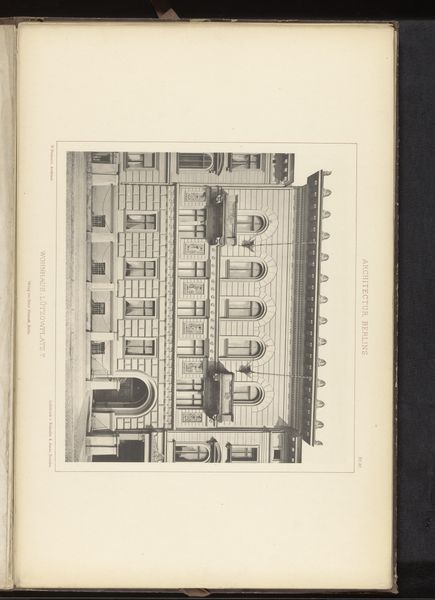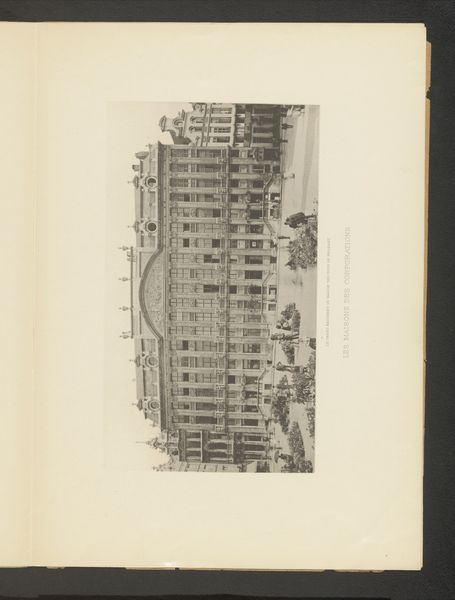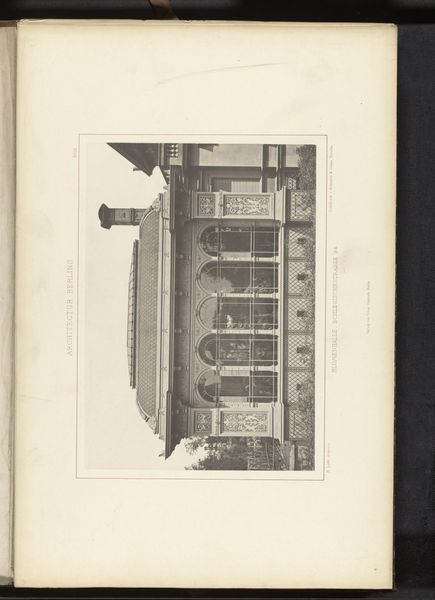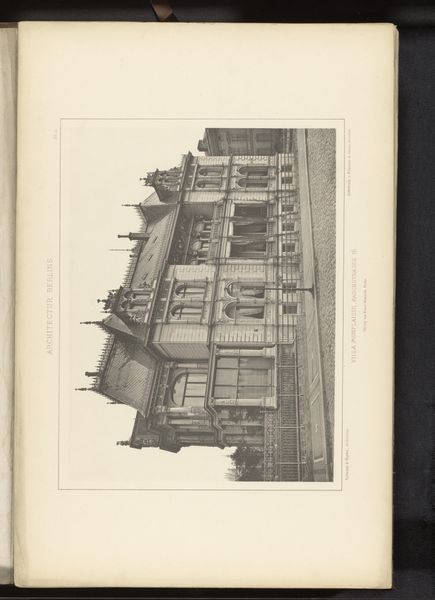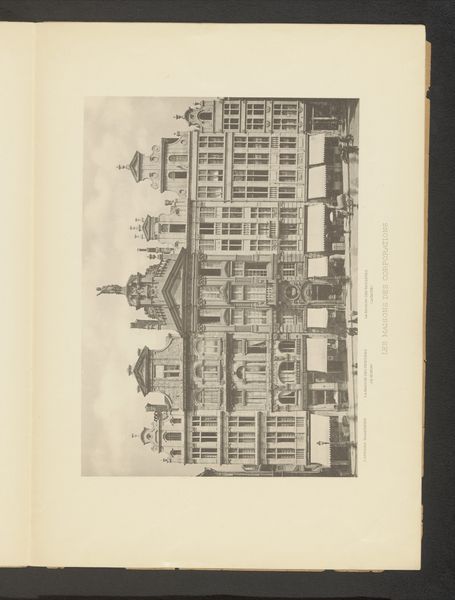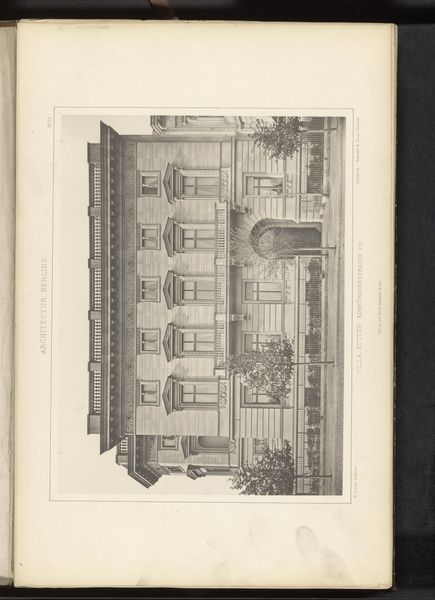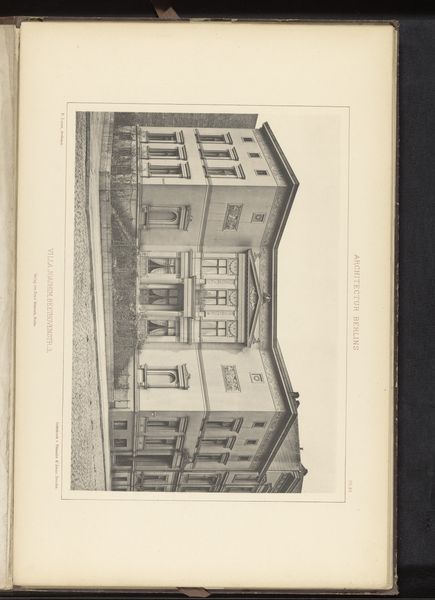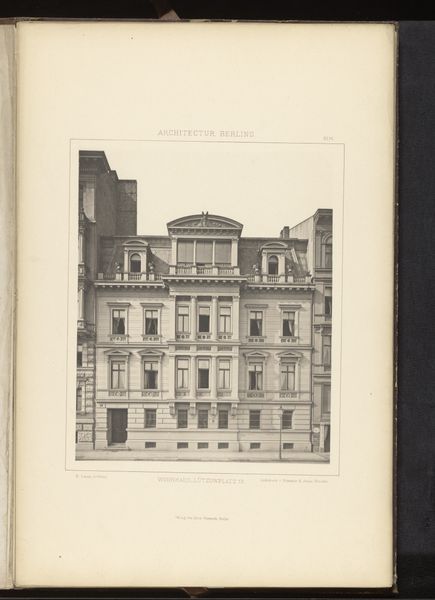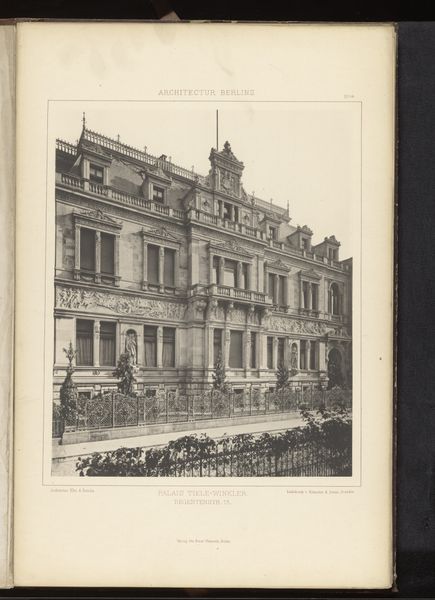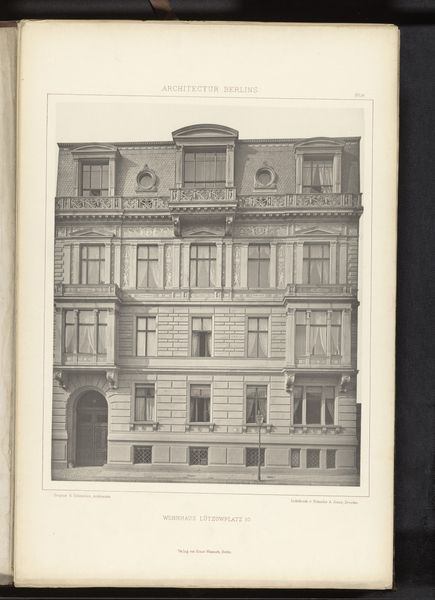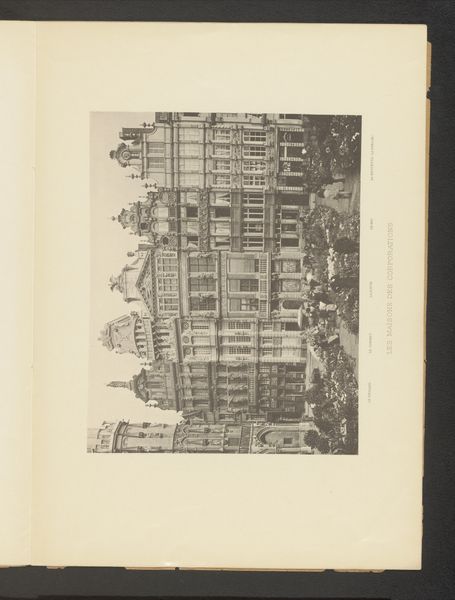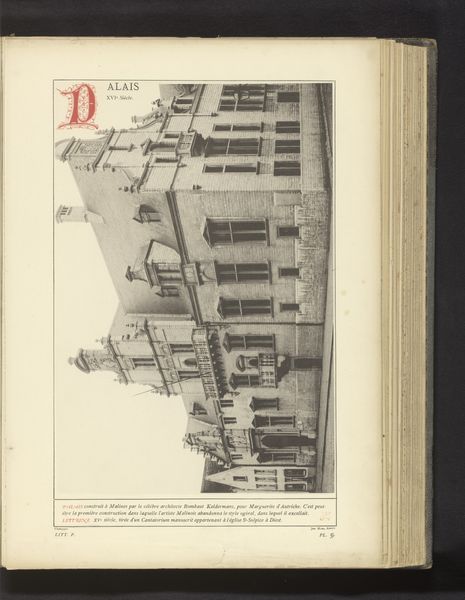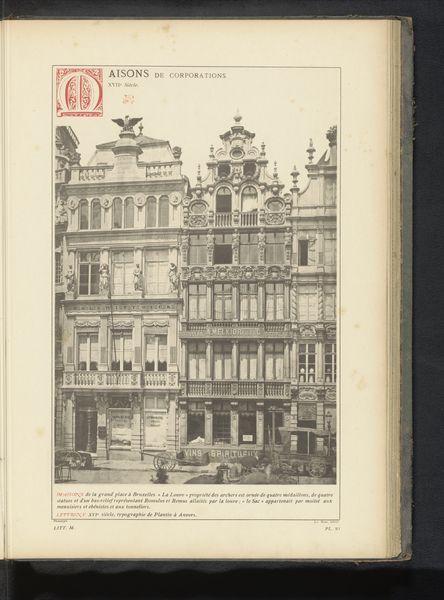
Gezicht op een woonhuis aan de Wilhelmstrasse 67 in Berlijn, Duitsland before 1877
0:00
0:00
drawing, print, paper, engraving, architecture
#
drawing
# print
#
paper
#
cityscape
#
academic-art
#
engraving
#
architecture
#
realism
Dimensions: height 248 mm, width 317 mm
Copyright: Rijks Museum: Open Domain
Curator: At first glance, this architectural print of Wilhelmstrasse 67 in Berlin projects an image of austere bourgeois stability. What is your immediate read on this particular building’s persona? Editor: The somber tones really dominate here, casting the façade in an almost melancholic light. It gives the impression of permanence but there's also something heavy about the regularity of the windows and the density of the detail. This print on paper comes to us anonymously and before 1877. Curator: Anonymous, yes, but steeped in the visual language of its time! Note how the façade adheres to a clear hierarchy, from the rusticated base to the embellished frieze near the roofline, each detail whispering of power and civic pride through classically derived motifs. Do you see it reinforcing specific values, like order and decorum? Editor: I am very interested in this print as an architectural reproduction that seems to blur the line between art and documentation. What type of engraver had the skill and technical know-how to depict this accurately, but more significantly how accessible would it be? What level of visual literacy do you require to "get" the historical weight you assign to it? Curator: I think a core piece is about visibility and endurance! Consider the conscious effort to present this domestic architecture as a carrier of cultural significance – to immortalize a moment in the ongoing narrative of Berlin through classical references to the past, like many buildings did on the Ringstrasse in Vienna. The goal is clearly not just showing a building, but shaping its meaning and prolonging cultural significance through representation. Editor: But let's not neglect the process itself. What dies the selection of materials convey to us? How does a medium such as engraving become associated with legitimacy and authority through repetition? It demands the recognition of the craftsmanship involved in its making! Curator: That’s true! The print-making amplifies the meaning-making; the building gains stature being rendered with this meticulous and detailed engraving on paper, but I am still reading symbolic architecture on several levels. Editor: Precisely, but for me it is about challenging any distinction we might find between making art, crafting, documenting! I leave this engraving reflecting on process, repetition, the artist’s hand, labor… Curator: And for me it’s a poignant snapshot into Berlin’s ambitions at that time – using architectural visual tropes to project wealth and a grand narrative that might otherwise get overlooked!
Comments
No comments
Be the first to comment and join the conversation on the ultimate creative platform.
